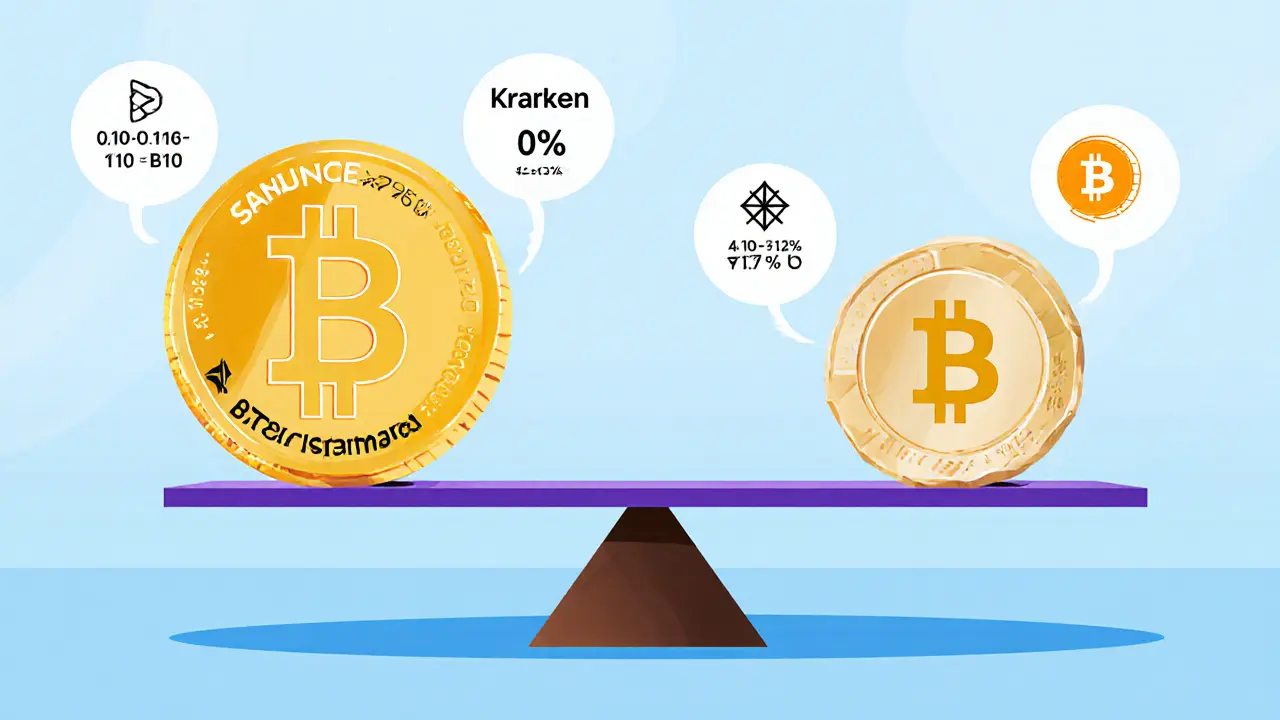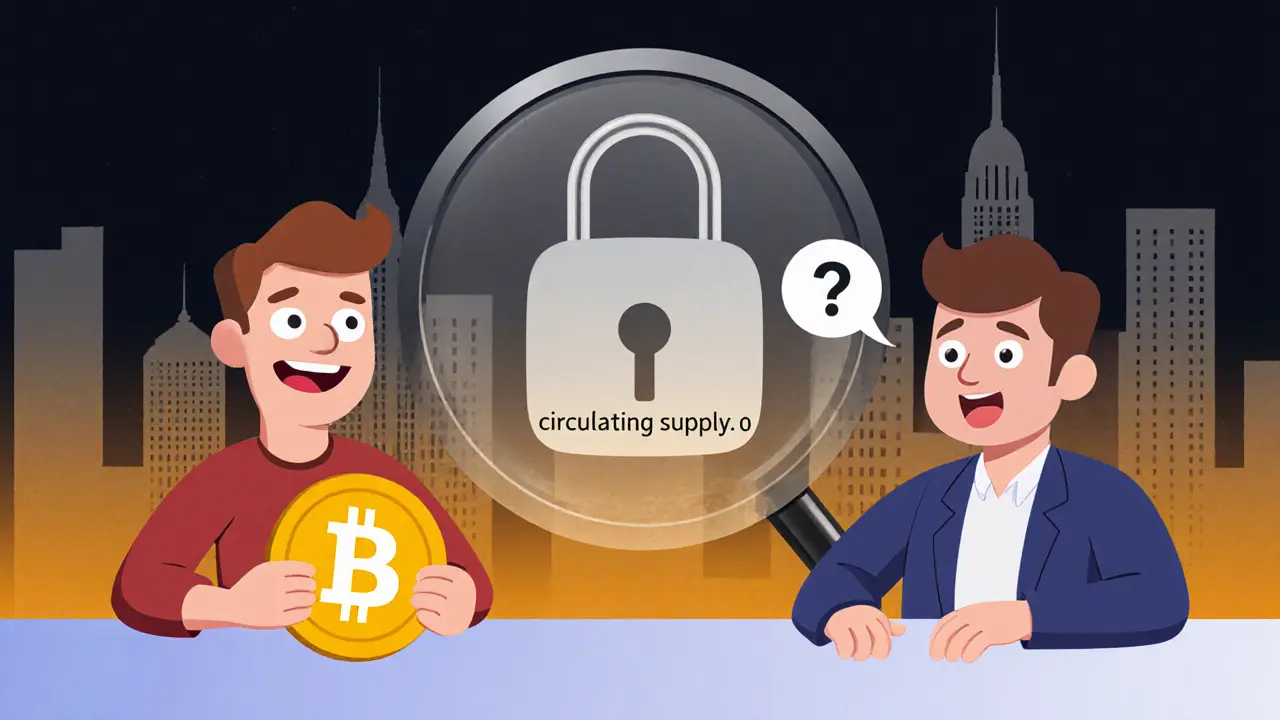SatoExchange Fee Calculator
Trading Fee Calculator
Withdrawal Fee Calculator
Fee Comparison
SatoExchange
Trading: 0.20% flat
BTC Withdrawal: 0.001 BTC
Industry Avg
Trading: 0.10-0.15% flat
BTC Withdrawal: 0.0007 BTC
Your Savings
Calculate your savings
SatoExchange is a decentralized cryptocurrency exchange that focuses exclusively on crypto‑to‑crypto trading and runs its own utility token called SATX. If you’ve heard the name tossed around in Reddit threads or YouTube videos, you’re probably curious whether it lives up to the hype. This SatoExchange review breaks down the platform’s fee model, token economics, security stance, and the real‑world experiences users share on review sites. By the end you’ll know if it’s a solid tool for seasoned traders or a roadblock for beginners.
What Sets SatoExchange Apart?
Unlike big names like Binance or Coinbase, SatoExchange does not accept fiat deposits. That means you need to already own crypto-usually Bitcoin, Ethereum Classic, Dogecoin or the platform’s own SATX token-to start trading. The exchange markets a handful of pairs against BTC, ETC, DOGE and USD, keeping the offering narrow but simple.
Fee Structure - The Numbers You Need to Know
Fees are often the first thing traders compare. SatoExchange charges a flat 0.20% fee for both makers and takers. That’s transparent, but it sits a bit above the newer 0.10-0.15% rates you see on platforms that are fighting for volume. Here’s a quick snapshot:
| Exchange | Trading Fee | BTC Withdrawal Fee | Fiat On‑Ramp |
|---|---|---|---|
| SatoExchange | 0.20% (flat) | 0.001 BTC | No |
| Binance | 0.10% (maker) / 0.12% (taker) | 0.00053 BTC | Yes |
| Kraken | 0.16% (maker) / 0.26% (taker) | 0.0005 BTC | Yes |
| XT.com | 0.25% (flat) | 0.0006 BTC | Yes |
The withdrawal cost of 0.001 BTC is roughly 40 % higher than the industry average, which can add up if you move large amounts frequently.
Tokenomics - Is SATX Worth Holding?
The native SATX token has a total supply of 238.03 million, capped at 300 million. Strangely, CoinMarketCap lists its circulating supply as zero, a red flag that suggests either a distribution delay or a data error. Without a clear circulating figure, it’s hard to gauge market depth or price stability. For traders, the token mainly serves to lower fees on the platform (if the exchange ever implements such a discount) and to participate in any future governance votes-though no roadmap for token utility has been publicly shared.
User Sentiment - What Real Users Are Saying
Reviews are mixed. On Trustpilot, SatoExchange sits at a bleak 1.7 / 5 from 22 reviews, indicating widespread dissatisfaction. Users complain about the high BTC withdrawal fee and lack of fiat onboarding. Meanwhile, a single‑review rating of 3.0 / 5 on Cryptogeek paints a slightly more neutral picture, but the sample size is too tiny to trust.
On the brighter side, an enthusiast from Fxmerge posted a glowing endorsement in 2023, saying the platform “exceeded expectations” and recommending it as “reliable and efficient.” The stark contrast between that praise and the low Trustpilot score suggests either a highly polarized user base or possible bias in individual reviews.
Security and Regulation - The Missing Pieces
Security details are scarce. No public audit reports, server location disclosures, or clear KYC/AML procedures are found in the available documentation. The lack of regulatory licensing information-no mention of compliance with the U.S. FinCEN rules, EU MiCA, or Singapore MAS-makes the exchange a risky choice for anyone who values legal clarity.
Given the industry trend of tightening regulations, operating without a clear compliance framework could limit SatoExchange’s longevity. Larger exchanges are investing heavily in licensing, which may push niche platforms like this further into the shadows.

Who Should Use SatoExchange?
- Experienced crypto holders who already have BTC, ETC, DOGE or SATX and want a simple, flat‑fee trading interface without dealing with fiat deposits.
- Traders looking for a narrow set of pairs and who don’t need advanced order types or deep liquidity.
- Anyone comfortable navigating limited customer support and who can tolerate higher withdrawal costs.
For beginners, the platform is a poor fit. The absence of fiat on‑ramps means you’d need another exchange just to get started, adding needless complexity.
How to Get Started (Step‑by‑Step)
- Acquire a supported cryptocurrency (BTC, ETC, DOGE, or SATX) on a fiat‑friendly exchange.
- Visit the SatoExchange website and click “Register”.
- Enter a valid email address and create a strong password.
- Confirm your email via the activation link.
- Enable two‑factor authentication (Google Authenticator or Authy) for added security.
- Deposit your crypto by generating a wallet address on the “Deposit” page and sending funds from your source wallet.
- Navigate to the “Trade” tab, pick a pair (e.g., BTC/ETH), set your order type (market or limit), and confirm.
- When you’re ready to cash out, go to “Withdraw”, input a destination address, and note the 0.001 BTC fee.
Because there’s no fiat gateway, you’ll have to repeat step 1 whenever you want to move money in or out of the platform.
Pros and Cons at a Glance
- Pros:
- Flat 0.20% fee is easy to predict.
- Pure crypto‑only environment may appeal to privacy‑focused traders.
- Simple UI with few unnecessary features.
- Cons:
- No fiat deposits - a deal‑breaker for newcomers.
- Higher BTC withdrawal fee than the market average.
- Poor Trustpilot rating (1.7 / 5) signals customer‑service issues.
- Lack of clear regulatory compliance and security audits.
- Limited token list and low liquidity for many pairs.
Future Outlook - Should You Keep an Eye on SatoExchange?
As of 2025, the platform shows little public roadmap activity. The SATX token’s circulating supply mystery and the absence of announced upgrades suggest a stagnating project. If the exchange wants to stay relevant, it would need to:
- Introduce a competitive withdrawal fee (<0.0006 BTC) to match industry standards.
- Secure at least one regulatory license in a major jurisdiction.
- Offer a fiat on‑ramp, even if it’s a partner integration.
- Publish regular security audits and transparency reports.
Without these moves, SatoExchange may become another casualty of the market consolidation that has already wiped out many small DEXes.
Bottom Line
If you already have crypto and want a no‑frills, flat‑fee venue, SatoExchange can serve that niche. However, the high withdrawal costs, lack of fiat entry, weak user reviews, and missing compliance data make it a risky choice for most traders. For newcomers or anyone who values robust support and regulatory clarity, sticking with a larger, fiat‑friendly exchange is the safer bet.

Does SatoExchange support fiat deposits?
No. The platform only allows crypto‑to‑crypto transfers, so you need another exchange to convert cash into Bitcoin, Ethereum Classic, Dogecoin or SATX before you can trade on SatoExchange.
What is the trading fee on SatoExchange?
Both makers and takers pay a flat 0.20% fee on each trade. This fee is higher than the 0.10-0.15% rates you see on newer low‑cost exchanges.
How much does a Bitcoin withdrawal cost?
SatoExchange charges 0.001 BTC per withdrawal, which is about 40 % above the global average of roughly 0.00053 BTC.
Is the SATX token widely circulated?
CoinMarketCap lists a total supply of 238.03 million tokens but reports a circulating supply of zero, which suggests the token is either not yet distributed or the data is inaccurate.
Are there any regulatory licenses for SatoExchange?
Public sources do not mention any licensing in the United States, EU, or Singapore, making the exchange’s compliance status unclear.
Ralph Nicolay
October 24, 2025 AT 09:37The flat 0.20% fee remains constant irrespective of volume.
sundar M
October 27, 2025 AT 07:04For traders seeking simplicity, SatoExchange does what it promises – a bare‑bones UI and a predictable fee schedule.
Its limited pair selection keeps the order book shallow, which can be a blessing for newbies who don’t want to wade through dozens of markets.
Yet the absence of fiat on‑ramps forces a detour through another exchange, adding an extra step that many find frustrating.
On the bright side, the platform’s crypto‑only focus may appeal to privacy‑conscious users who dislike KYC hassles.
Overall, the trade‑off is clear: convenience versus autonomy.
Peter Schwalm
October 30, 2025 AT 04:30When evaluating any DEX, look at withdrawal costs – Sato’s 0.001 BTC fee is noticeably higher than the 0.0005 BTC average.
This can erode thin margins, especially for high‑frequency traders.
Also, the SAT‑token’s circulating supply mystery makes it hard to gauge depth, so treat it like a speculative token.
Alex Horville
November 2, 2025 AT 01:57The platform’s U.S.‑centric marketing feels out‑of‑place given the lack of any regulatory compliance.
Petrina Baldwin
November 4, 2025 AT 23:24No fiat, high BTC withdrawal fee – not beginner‑friendly.
Laura Herrelop
November 7, 2025 AT 20:50Every time a project hides its token metrics, you have to wonder who's pulling the strings behind the curtain.
Maybe it’s a deliberate obfuscation to keep the price pumpable.
Or perhaps the developers simply forgot to update the stats – but that’s a risky gamble in a space where transparency is currency.
Nisha Sharmal
November 10, 2025 AT 18:17Sure, the fee is “flat”, but flat at 0.20% is still above what most Asian exchanges charge.
Sounds like a cash grab to me.
Karla Alcantara
November 13, 2025 AT 15:44I like that SatoExchange keeps things simple – no confusing tiered fees.
If you already own BTC, ETC, DOGE or SATX, you can jump right in.
The community could benefit from a clearer roadmap, though.
Hope the team adds more pairs soon.
Nick Carey
November 16, 2025 AT 13:10Let’s break this down piece by piece, because the hype around SatoExchange hides a lot of gritty details.
First, the fee structure: a flat 0.20% for both makers and takers sounds tidy, but when you compare it to Binance’s 0.10% maker rate, you realize you’re paying double for the same service.
Second, the withdrawal cost – a 0.001 BTC fee translates to roughly $30‑$40 at current prices, which is steep for anyone moving funds regularly.
Third, tokenomics are a mess; the circulating supply is listed as zero, making market depth analysis impossible and raising red flags about liquidity.
Fourth, user sentiment is polarized – Trustpilot’s 1.7‑star rating screams dissatisfaction, yet a lone glowing review on a niche forum paints a rosy picture that’s hard to trust.
Fifth, the security posture is nebulous – no public audit reports, no KYC/AML clarity, and no jurisdiction‑specific licensing, which is a recipe for regulatory trouble.
Sixth, the platform’s lack of fiat on‑ramps forces you to juggle multiple exchanges, adding friction for newcomers.
Seventh, the UI is intentionally minimalistic, which can be a blessing for seasoned traders but feels barren for anyone seeking advanced order types.
Eighth, the higher withdrawal fee may deter high‑volume users, pushing them toward competitors with cheaper on‑chain fees.
Ninth, the SATX token’s utility is vague; without a discount mechanism or governance participation, holding it seems speculative at best.
Tenth, the roadmap is silent – no upcoming features, no upgrades, just a static product that may fade into obscurity.
Eleventh, liquidity is thin on many pairs, leading to slippage that can cripple larger orders.
Twelfth, customer support appears limited, as reflected by the low Trustpilot scores and handful of negative reviews.
Thirteenth, the platform’s compliance vacuum could become a legal nightmare as global regulators tighten crypto rules.
Fourteenth, the overall experience caters to a niche audience of crypto‑savvy users who already have the assets and don’t need fiat.
Fifteenth, for anyone on the fence, the cons outweigh the pros unless you specifically need a crypto‑only, no‑KYC exchange.
In short, SatoExchange is a specialized tool with a narrow use‑case, but its fees, token ambiguity, and regulatory opacity make it a risky bet for most traders.